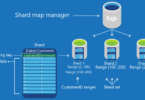Zero Trust models require rigorous authentication and authorization and limit access to sensitive resources. They also need to determine the “blast radius” if a breach does occur by encrypting end-to-end and monitoring systems, applications, and devices for vulnerabilities. This requires security tools, including next-generation firewalls, software-defined perimeter solutions, and identity-aware proxies. It also includes a variety of data protection mechanisms at rest, in use, and transit.
Authentication and Authorization
As data, applications, and identities move beyond the traditional enterprise perimeter, organizations must secure them more comprehensively without sacrificing agility or usability. Zero trust network access is built on the principle of never trust, always verify. This is accomplished by treating every access attempt as a breach and requiring verification of identity, device health, security posture, and more for every connection. Authentication and authorization should be done on a per-request basis, granting access to only those resources needed at that moment in time. To do this, granular access policies are created based on the sensitivity of data in the application. This allows for the most protection of mission-critical assets by stopping lateral movement and providing access only to those devices that have been authenticated and authorized from locations and on trusted devices. To do this, visibility into network traffic is critical, and it’s essential to have continuous diagnostics and mitigation (CDM) systems or similar technology in place that monitors user devices for vulnerabilities so they can be patched. In addition, it’s necessary to have robust telemetry to identify anomalous behavior.
Micro-Segmentation
A key component of Zero Trust is micro-segmentation. This practice reduces the attack surface by separating access into small zones for each data type and application. In this way, an attacker who gains access to one part of the network cannot move throughout the entire environment laterally. This is especially important because attackers typically exploit a single entry point before moving within the network to avoid detection. Microsegmentation is a core component of the Zero Trust Network Access solution. The platform provides visibility into every connection and enables granular policy controls on a workload level. This makes isolating applications based on their environments, criticality, and compliance requirements possible. Software-defined micro-segmentation technology enables security teams to create secure islands within their distributed infrastructure and monitor and control communication between them. It uses a contextual application dependency map and easy-to-use labels to simplify segmentation using the language of IT, such as the stage in the development lifecycle, location, or the workload’s role. This enables security to ring-fence applications and protect them against advanced threats.
End-to-End Encryption
End-to-end encryption is one of the most effective ways to prevent data leaks from hackers and third parties as it conceals communications content on its journey through any intermediate devices and servers, and only the intended recipient can decrypt it. This property makes it nearly impossible for hackers to access unencrypted information, even if they compromise server infrastructure. Organizations must identify what resources require protection and how they are accessed to implement Zero Trust. They also need to create a policy that indicates user roles, authorizations, how people will authenticate (multifactor authentication is a must-have), and how connections will be monitored to detect and respond to anomalies. Zero Trust teaches us to “never trust, always verify.” It applies micro-segmentation and least-privilege access principles to limit lateral movement. It also uses strong authentication and verification to ensure every device, user, and application is verified, trusted, and secure before accessing any network resources. It also applies analytics, filtering, and logging to continuously monitor suspicious behavior so that users are flagged when their actions change or begin to act outside standard parameters.
Data Loss Prevention
Organizations must proactively monitor and control how data flows within and beyond the enterprise when implementing a Zero Trust network access strategy. The data pillar of a Zero Trust architecture identifies and helps prevent risky or inappropriate sharing, transfer, or use of sensitive information across on-premise systems, cloud-based applications, and endpoint devices like desktops/laptops and mobile phones. To effectively secure all connections to the multi-cloud environment, a Zero Trust security architecture must have multiple verification points for users and devices. This includes a robust, user-based authentication process — including multifactor authentication (MFA) — ensuring that only verified, authorized users can access sensitive resources and applications. It’s also essential to monitor and control data movement between these environments with continuous traffic monitoring. This requires a Zero Trust architecture that has visibility into all processes and communication to ensure the implementation of policies, detect any issues, and alert teams quickly. A Zero Trust architecture with these capabilities will help prevent the loss of valuable intellectual property and customer or employee data and enable enterprises to comply with regulations such as HIPAA or GDPR.
Automation
Zero trust architectures use automation to provide secure access to enterprise networks and resources. This includes granular control of user access per request, providing specific user and device credentials (multifactor authentication is required), externalizing apps and workflow, and securing all connections to multi-cloud environments and Internet of Things (IoT) devices. It also involves deploying automated processes that monitor and analyze behavior for signs of suspicious activity. These computerized systems are critical for catching attackers that slip through one verification point, such as a firewall or the initial login process of an application. A zero-trust strategy also requires evaluating every device — including IoT and BYOD devices. This is a significant change from traditional network security, which treats all traffic as coming from the trusted internal network. This approach prevents attackers from exploiting a vulnerability to gain lateral movement inside the corporate perimeter. A zero-trust system should be able to detect and stop such lateral movement before it occurs and provide protection on a per-app, per-user basis. This is a crucial component of achieving the least privilege and protecting data.







